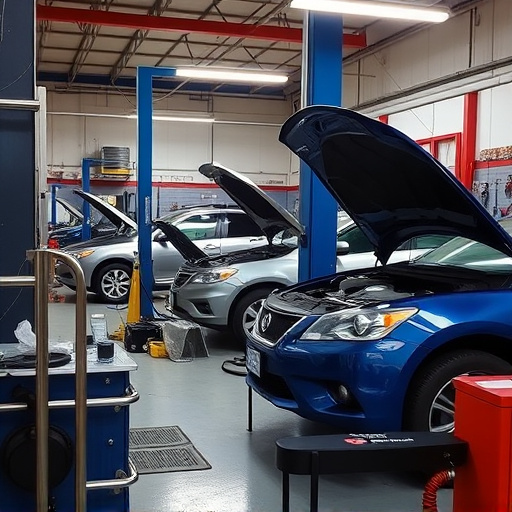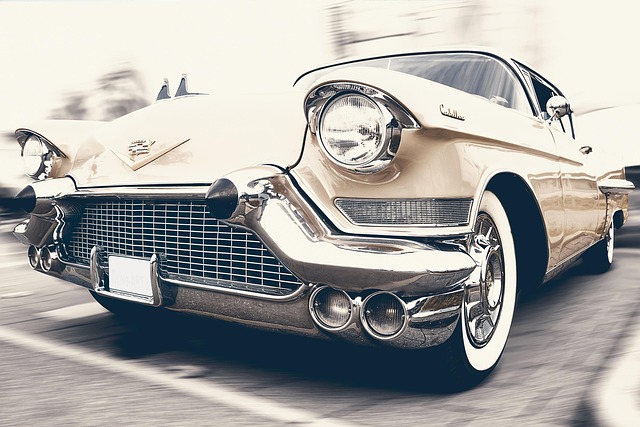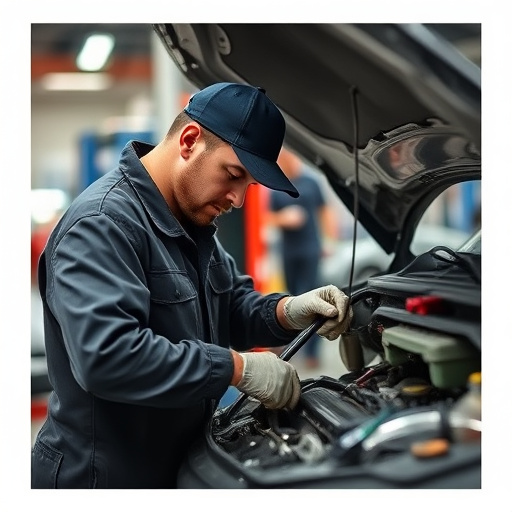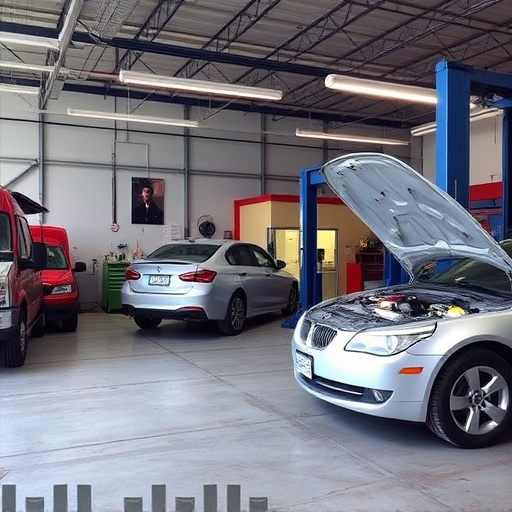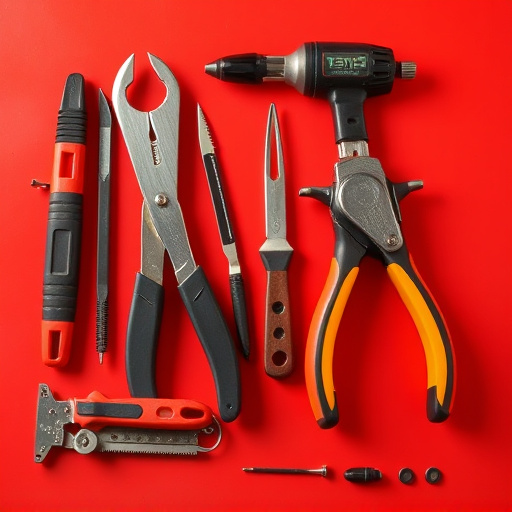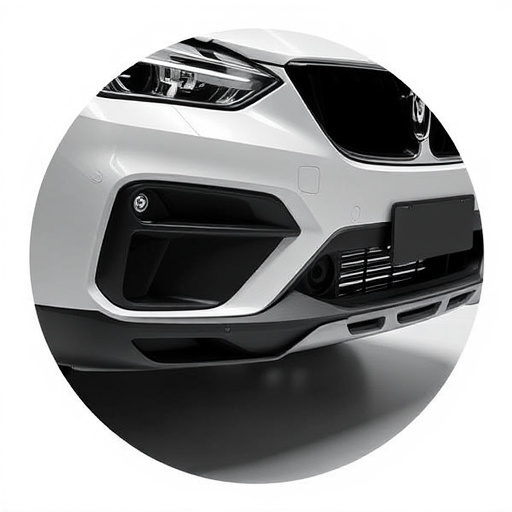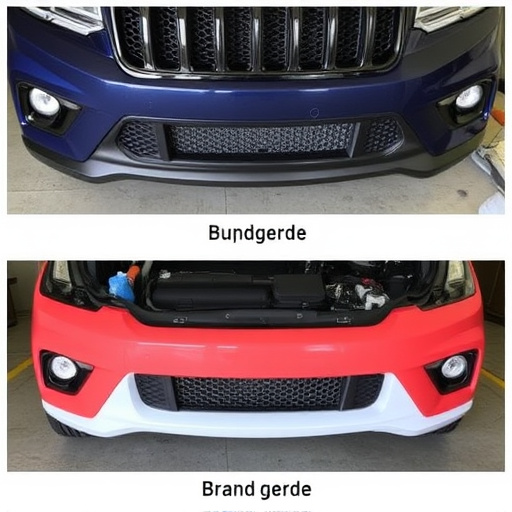For safe and effective bumper crack repair, adhering to Original Equipment Manufacturer (OEM) guidelines is vital. These guidelines dictate materials, techniques, and procedures for achieving both structural integrity and aesthetic excellence, ensuring the repaired bumper functions and looks like new. Ignoring OEM standards can compromise vehicle safety and performance, so trusted auto repair shops specializing in both auto glass repair and maintenance are best equipped to deliver high-quality bumper crack repair services that meet these stringent criteria.
Bumper crack repair is not just about aesthetics; it’s a critical safety feature. To ensure effective and safe repairs, adhering to Original Equipment Manufacturer (OEM) guidelines is paramount. This article delves into the essential standards and best practices for bumper crack repair, emphasizing why following OEM protocols is crucial. By understanding these guidelines, you can achieve both optimal functionality and superior visual appeal in bumper crack repairs.
- Understanding Bumper Crack Repair Standards
- The Importance of Following OEM Guidelines
- Best Practices for Effective Bumper Crack Repairs
Understanding Bumper Crack Repair Standards

When it comes to bumper crack repair, adhering to Original Equipment Manufacturer (OEM) guidelines is paramount for both quality and safety reasons. These standards are set by the car manufacturer and detail specific procedures, materials, and techniques that should be followed during the repair process. Understanding these guidelines ensures that the bumper not only looks like new but also retains its structural integrity, which is crucial for vehicle safety.
OEM repair guidelines cover various aspects, including the type of adhesives and fillers permitted, the depth to which cracks can be repaired without replacement, and the specific methods for blending repairs with the original paint job. Vehicle repair services that follow these standards ensure a seamless fit and finish, indistinguishable from the rest of the car’s exterior, and thus enhancing the overall aesthetic appeal and value of the vehicle in case of a car restoration process.
The Importance of Following OEM Guidelines

Following OEM (Original Equipment Manufacturer) guidelines for bumper crack repair is paramount to ensuring structural integrity and long-lasting performance. These guidelines are developed based on extensive research and testing, reflecting the manufacturer’s deep understanding of their vehicles’ design and safety features. Adhering to these standards guarantees that the repair precisely mimics the original design, maintaining the vehicle’s strength and aesthetic appeal.
Neglecting OEM recommendations can lead to subpar repairs, compromising not just the bumper’s functionality but also the overall safety of the vehicle. An auto repair shop skilled in both auto glass repair and auto maintenance will appreciate these guidelines, enabling them to deliver top-notch services that match the manufacturer’s high standards. This approach ensures customer satisfaction and peace of mind on the road.
Best Practices for Effective Bumper Crack Repairs
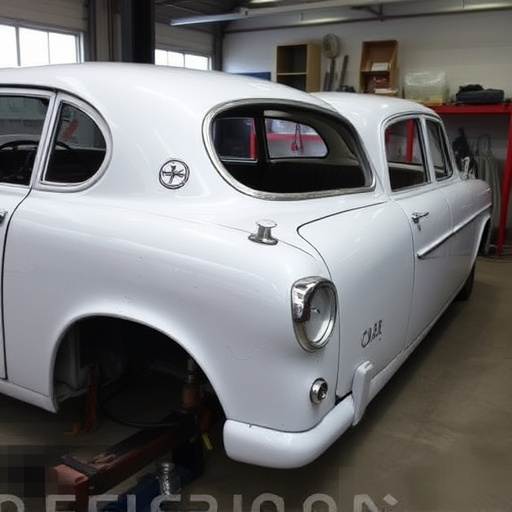
When it comes to bumper crack repair, adhering to Original Equipment Manufacturer (OEM) guidelines is paramount for effective and long-lasting results. The first step in best practices involves thorough inspection and assessment of the damage. Auto body restoration experts should closely examine the bumper, identifying the extent and type of cracks present. This meticulous process ensures that every imperfection is addressed accurately, preventing further deterioration.
Next, using the right tools and techniques is crucial. A reliable vehicle body shop will employ advanced equipment to create a precise fit during the repair process. This includes utilizing specialized adhesives and fillers tailored for bumper crack repair, ensuring a seamless fusion that matches the car’s original finish. By following these guidelines, auto body restoration professionals can guarantee not only structural integrity but also aesthetic appeal, making the repaired bumper virtually indistinguishable from the original.
In conclusion, successful and lasting bumper crack repairs necessitate adherence to Original Equipment Manufacturer (OEM) guidelines. By understanding industry standards and best practices, professionals can ensure repairs that not only meet but exceed expectations. Following these OEM repair guidelines is paramount for maintaining vehicle integrity and aesthetic appeal, ultimately providing customers with reliable and safe solutions for their bumper crack repair needs.



